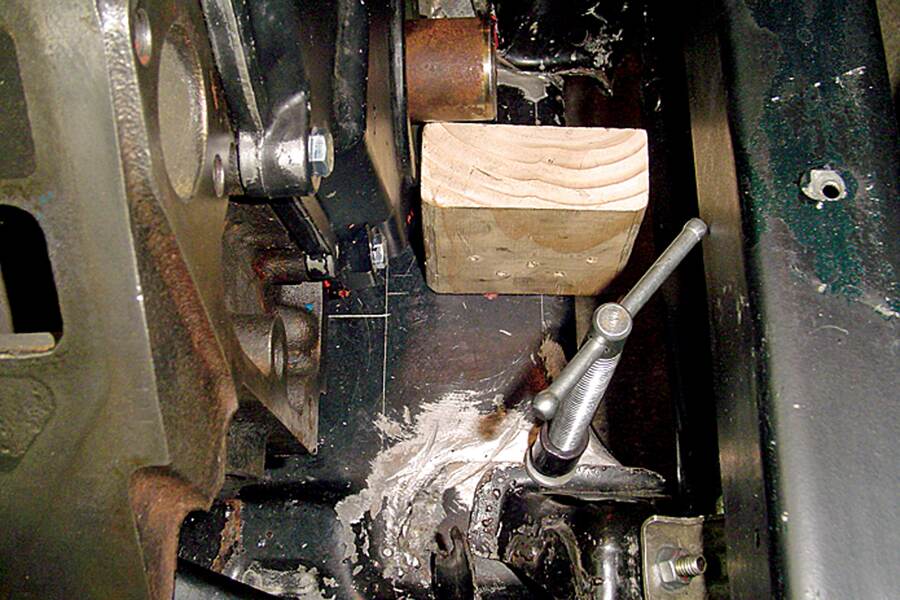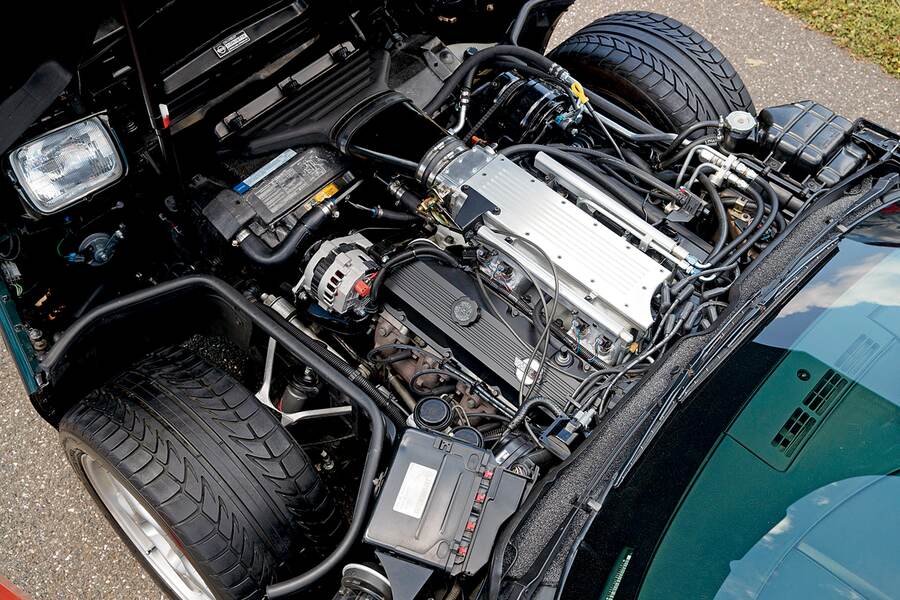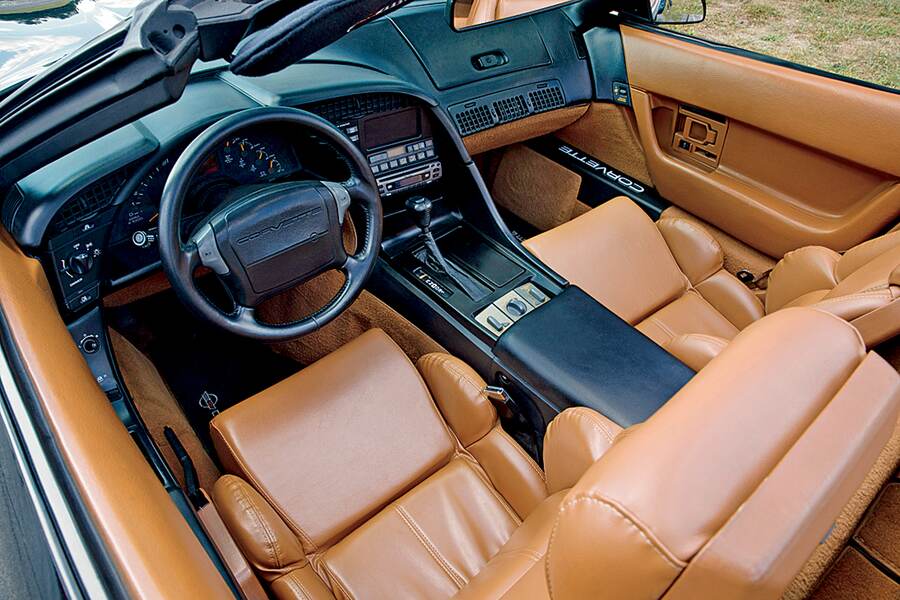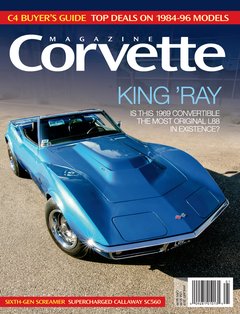With a tip of the hat to JFK, Gennaro Aulisio chose to install a big-block in his 1991 Corvette and “do the other things,” not because they were easy, but because they were hard; because that goal served to organize and measure the best of his energies and skills; because that challenge is one that he was willing to accept, one he was unwilling to postpone, and one he intended to win.
“I’m just an old hot-rodder at heart,” Aulisio explains, “so it was natural to want to put a big engine in a small car. I knew it would be very difficult, but that only motivated me more. I have always been a DIY guy, with a lot of curiosity about how things work.”
The resourceful New Englander brought a diverse array of experience to the undertaking. He worked in service stations and car dealerships through high school, and as an adult worked at General Electric, helping to solve problems with the Bradley Fighting Vehicle’s transmission. He also ran the R&D test lab and prototype shop for a steering-column manufacturer, and designed co-generators based on big-block Chevrolet engines.

To get his C4 project going, Aulisio bought a Polo Green ’91 convertible “that had been around the block a few times and [was] in need of some love.” Because the car had been neglected, and in prolonged storage without proper preparation, he began by fixing a long list of malfunctioning electrical and mechanical components. Next, he recovered the seats, restored the console and replaced most of the weather stripping. Once that was completed, he started researching what it would take to fit a vintage big-block engine in the car.
“I found that a few people had made big-block engine swaps, including some pro shops, a few back-yarders and even the R&D people at Chevrolet,” he says. “They called it the ‘Big Doggie,’ or ZR2…[and that] one would be my inspiration.” [See related story.] What drew Aulisio to Chevy’s in-house effort was its understated appearance, which differed only minimally from a standard-issue C4. “In my research…the others didn’t have that stock look. They had raised hoods and a lot of custom-machined parts. Even the ZR2 had a slightly raised hood, [because of] its modified Weiand tunnel-ram manifold. My installation needed to be clean and neat, with a stock hood. I wanted a ‘sleeper’ car.”
As expected, Aulisio’s biggest challenge was figuring out how to fit the engine in the car, a feat made even more difficult by his unwillingness to raise the hood. As a starting point, he positioned a spare 454 block in the engine bay to sort out how the chassis, suspension and steering would have to be modified. He concluded, among other things, that he’d have to use a 7-inch harmonic balancer, because anything larger would require too many additional modifications. Specifically, a large portion of the structure would need to be cut away; the steering rack would have to be positioned ¾-inch forward in order to clear the crankshaft pulley; and he would have to create a 7×3-inch notch in the stock K-member to provide space for an oil pan.

Aulisio was determined to install electronic fuel injection on the big-block, but he couldn’t find an EFI system that mounted low enough to clear the hood. At the suggestion of his brother John, he looked into building his own system, starting with a blower manifold because they are typically very low.
“Indy Cylinder Head had one that looked like I could make it work,” he says.”I called Russ at Indy for the measurements of the burst-plate area. It was large enough to fit a throttle body, [so] I sent him a sketch of how I wanted to modify it for my project. He thought I was nuts, but had no trouble selling me one in the raw. Paul Drake at AFAB Machine in Holyoke, Massachusetts…turned my drawings into a working piece.”
With the clearance issue on top of the engine solved, Aulisio turned his attention to his next hurdle, which was coming up with an oil pan with enough capacity and sufficient ground clearance. Making the task more difficult, he wanted to add a stroker crank to the 454 that was going into the car. After searching high and low for a suitable pan and coming up empty, he decided to make his own by modifying a 9-quart marine pan.

A 1991 magazine article on Chevrolet’s ZR2 pointed Aulisio in the right direction regarding engine accessories and brackets. Chevy engineers relied, in part, on early C3 brackets, some of which worked well for Aulisio’s car. But he still had to do a lot of engineering and fabricating because the ZR2 was built using an earlier C4 that didn’t have the larger front-chassis structural bracing found in a ’91. The bigger brace was in the way of a C3 power-steering pump, which in turn cascaded into a plethora of additional problems.
“Just to experiment with, I purchased an Allstar power-steering pump with a pulley,” Aulisio explains. “After playing around with it and all the other brackets, [this] is what I came up with, keeping in mind that the big-block C3 belt arrangement is a little funky to begin with. My friend Paul Drake machined a stepped, two-groove pulley. The inner groove has the crank, water pump and power steering. The middle groove runs the crank and water pump, the outer groove on the water pump runs the AC compressor, and the outer groove on the power-steering pump works the alternator. All of the brackets did get some tweaking to make [it] work. I flipped the power-steering cooler around, moved it outboard of its mounts and added new hoses. At the local boneyard, I found a power-steering reservoir that worked.”
The same ingenuity that enabled Aulisio to overcome the accessory-mount and drive problems was applied to other areas of the build. He had to use a ’95 Corvette intermediate steering shaft, which has its rag joint at the end instead of near the middle, to clear the driver-side exhaust manifold. The passenger-side manifold, meanwhile, had to be machined to create a seven-degree angle on its port side so it would clear the frame rail. A standard Delco starter motor and HEI distributor cap wouldn’t fit, but the smaller “mini” versions of those parts worked just fine.

Cooling the big engine was a concern, so Aulisio installed the largest three-core Champion radiator he could. Clearance for the air conditioning’s evaporator housing was another major problem, one he solved with a very difficult-to-find housing from a C4 ZR-1. The ZR-1 housing also had the OEM look Aulisio was determined to maintain.
Even after all of the major components were in place, there was plenty more work to do. “I fabricated all of the fuel, water, power-steering and transmission lines, and a few more items like the air snorkel, wiring harnesses, cable brackets and exhaust system,” Aulisio relates. “Surprisingly, the windshield-wiper motor still fit, but just about every other part under the hood needed some kind of a modification.”
The engine that went into the car was built up using a stock Gen VI iron block, along with ProComp 320 aluminum cylinder heads fitted with Comp Cams roller rockers and a Chevrolet ZZ502 camshaft. A 4.250-inch Eagle forged-steel crank combines with .030-inch-over SRP forged-aluminum pistons to yield 489 cubic inches of displacement. Induction comes courtesy of the Paul Drake–modified Indy Cylinder Head blower manifold and a Professional Products 58mm throttle body. Fuel is delivered to the engine via a GM pump and regulator, Edelbrock rails, Accel 44-lb/hr injectors and a TPIS controller. The mixture is lit by a Moroso DuraFire distributor and Moroso ProCoil ignition coil.

A TCI 700R4 transmission and stock Dana 44 differential with 2.59:1 gears get power to the rear wheels via the original driveshaft. Seventeen-inch A-Mold wheels, which were original equipment on 1994-95 ZR1s, as well as on ’96 Grand Sports and Collector Editions, wear 275/40ZR17 BFGoodrich g-Force Sport COMP-2 tires.
Aulisio is justifiably proud that he built this car himself over a period of nine months. That’s in addition to two-and-a-half-years spent gathering all of the needed parts. It was considerably more time consuming and difficult than he anticipated, but he’s thrilled with the results and has enjoyed showing the car successfully as well as driving it.
“I wanted a car that [was] different, and that could challenge my skills. It had to offer outstanding performance and still be good for a Sunday drive because I also wanted my wife, Marge, to enjoy it,” he says. “I had an idea of what I was getting into from my research, but the project went well beyond that. I spent most of my time thinking and rethinking how to get everything to function, and just about every part had to be reworked. I love to drive the car, but I still consider it a work in progress. I will be adding C5 brakes in the future, and will look at adding a stronger third member, just so I can play harder.” m










